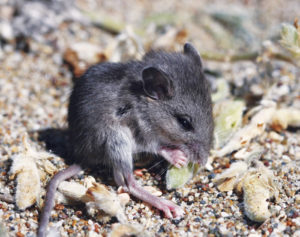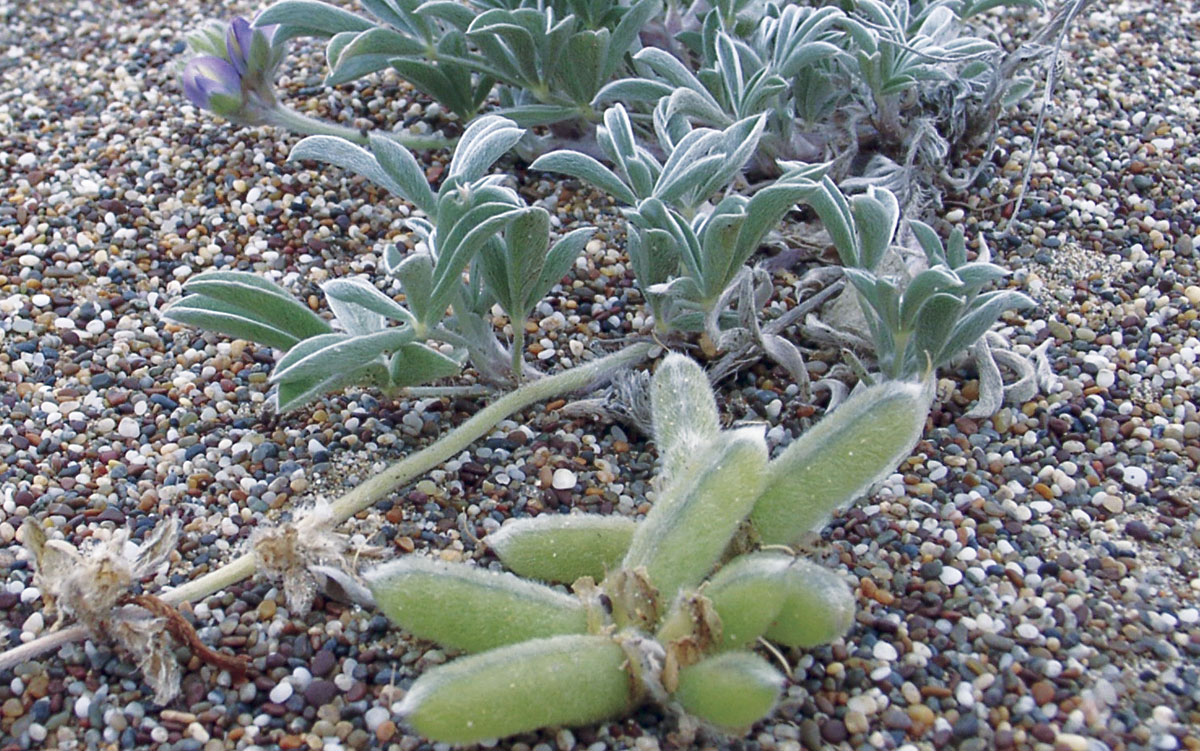In the shifting dunes and windswept scrub of Point Reyes, it’s easy to spot the common Chamisso bush lupine (Lupinus chamissonis). It can be harder to find the smaller, federally endangered Tidestrom’s lupine (Lupinus tidestromii). Yet the two plants are closely related, live in virtually identical habitats, and produce similar spears of purple flowers. A recent paper in the American Journal of Botany looks closely at the ecology of the two lupines to try and answer a fundamental ecological question: Why are some plants common and some plants rare?
Scientists often look to climate or environmental conditions to explain abundance, but in the mysterious case of the two lupines, Eleanor Pardini, Melissa Patten, and Tiffany Knight identified and investigated a biological factor. Their multi-year study focused on one more thing Tidestrom’s and Chamisso bush lupine have in common: a native seed predator, the deer mouse (Peromyscus maniculatus).

The researchers found that the deer mice take advantage of the Tidestrom’s’ shorter, smaller size by eating its seeds right off the plant—something all but the most intrepid mice won’t do with the taller common lupine, Pardini says.
So why, evolutionarily speaking, would Tidestrom’s lupine grow in a spot where it’s serving mainly as a mouse pantry? The answer, the researchers say, involves a frequent friend of rodents: people, who introduced an exotic beachgrass (Ammophila arenaria) in hopes it would stabilize the Point Reyes dunes. It did just that and as a result eliminated habitat for Tidestrom’s, which is adapted to colonizing wind-churned sands. Forming continuous, dense stands, the grass also provides excellent cover for the mice.
Park staff removed the nonnative beachgrass from 15.8 acres of dunes near a large patch of Tidestrom’s lupine in 2011. By 2012 the National Park Service counted more than 15,000 germinated Tidestrom’s lupine plants in the restored area, suggesting that the beachgrass had been limiting the lupine population. They also found that the deer mice were less likely to forage Tidestrom’s seeds when they grew farther away from the beachgrass (raptors have taught mice a thing or two about venturing into exposed areas). “There are so many ways the grass introduction affects this system,” Pardini says. “It was amazing to see things begin to snap back once it was removed.”
Correction: Due to an editing error, an earlier version of this story incorrectly suggested park staff had worked with the researchers to remove nonnative beachgrass. The removal was done independently.





